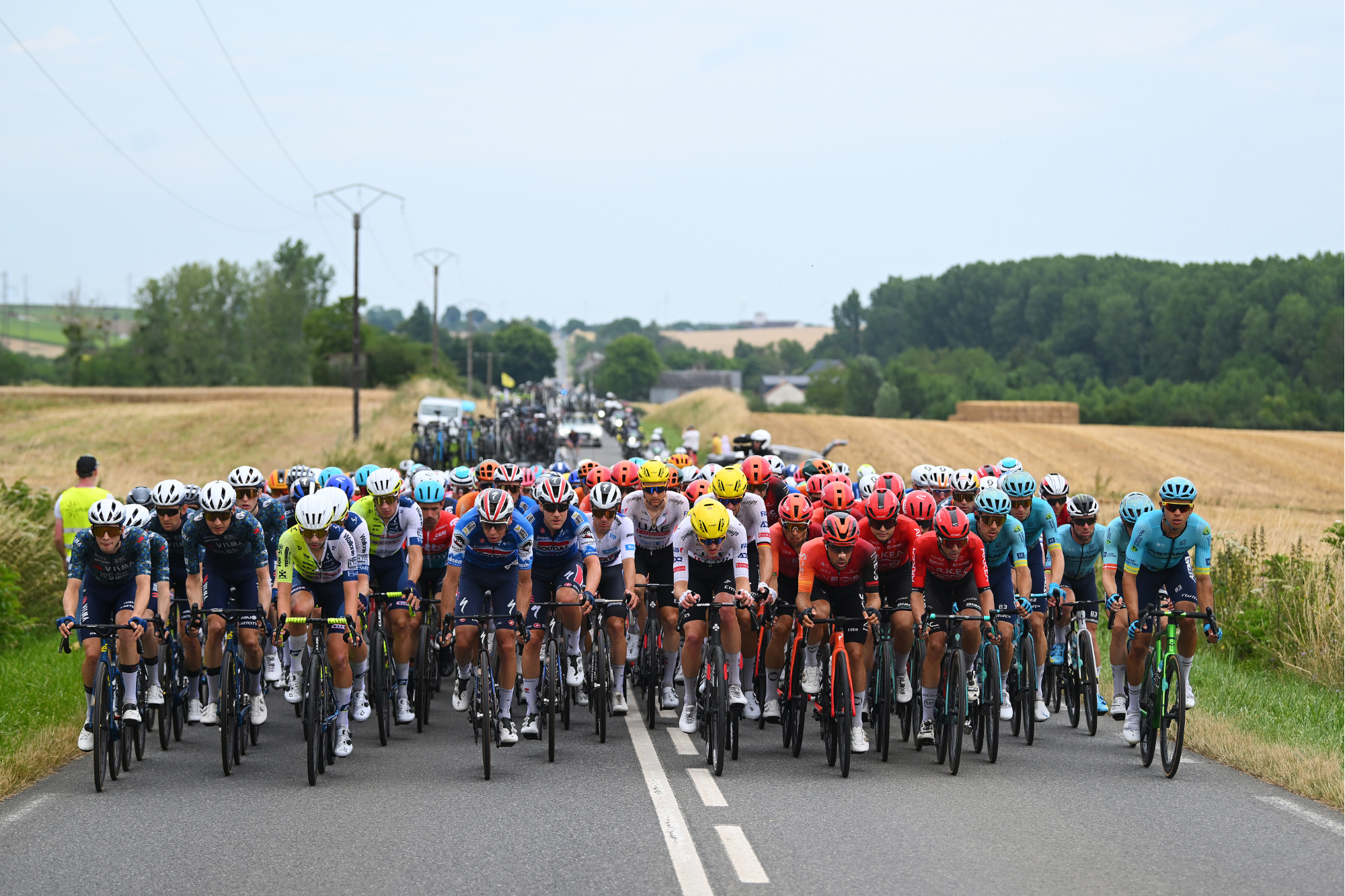100 bpm and 140 watts: How do we make Tour de France sprint days less boring?
Teams are increasingly critical of the succession of sprint stages that have few intermediate points on offer


So tranquil and relaxed was stage 10 of the Tour de France that Phil Bauhaus, one of the sprint contenders, had an average heart rate of just 110 beats per minute, while his average power was a meagre 140 watts – figures that most amateurs would recognise from a leisurely ride. Alexander Kristoff, another sprinter hoping to win in Saint-Amand-Montrond, had a similar story: “I have a low heart rate,” the Uno-X Mobility rider began, “but still, today I averaged 100. It was not too much."
The explanation behind the low power and heart rate numbers is that for the third time in the race’s 10 stages, no significant breakaway formed, and thus the peloton rode as a complete unit from the beginning to the end. With no-one to catch, there was no need to hurry. The debate around the team buses following the day was whether or not ASO, the race’s organisers, need to have a rethink about how they structure transitional and flat stages.
“If you want more to happen in this stage, you need to organise a special jersey for the intermediate sprints, one that is different to the green jersey,” said Intermarché-Wanty’s sports director Aike Visbeek, moments after watching his rider Biniam Girmay finish second to Jasper Philipsen (Alpecin-Deceuninck). “Right now, you take away the incentive to spend a lot of energy [with only one intermediate sprint] and there are no mountain points.
“When you don’t have an intermediate sprint jersey, you get these kinds of stages, and if we change that with a jersey up for grabs with three or four intermediate sprints in the stage then you’d get different dynamics, with teams chasing that jersey, riding offensively and wanting to be in the break. Now there is too little to gain."
Visbeek continued: “My biggest worry is for the spectators: if you want to entertain people but there is nothing to see, you slowly start to have less people going to watch three hours of cycling. They [race organisers, ASO] started with attractive stages and they have got their GC battle heated up… but an intermediate sprint classification would be a good way to make it a bit more exciting.”
Kristoff, 16th in the central French commune, echoed Visbeek's thoughts. “You look at the race course and can you see any reason to go in the break?” the Norwegian asked rhetorically. “There were not a lot of points for the sprint jersey, and zero points for the climb jersey, so there was not much to gain, and no-one wants to waste energy in the biggest race of the world.
“If there was a category four climb or a bonus, there would be more reason to go [in a break]. But nobody gives anything for free now, and everyone knows there was a 99% chance of a sprint, so no-one wanted to take that 1% chance.”
The latest race content, interviews, features, reviews and expert buying guides, direct to your inbox!
The lack of appetite for forming a break can also be traced to the level-playing field among the sprinters, with Philipsen becoming the fourth rider to win a fast finish so far. The school of thought goes that with a large number of teams optimistic of winning, why would they send a rider or two into a probable doomed break?
“There are a lot of teams with sprinters and the sprint teams are quite equal,” Bahrain-Victorious’s Bauhaus, eighth on the day, said. “10 years ago you knew as a second-row sprinter that it was impossible to win against [Mark] Cavendish, [André] Greipel and [Marcel] Kittel in their prime, but now there is only a small margin between first and 10th.
“I think a lot of teams have a sprinter who they believe can win, and also there were no King of the Mountains at the start, no [intermediate] sprints, so everyone knows there was nothing to get. It was a super easy day and the bunch sprints here remind me of the UAE Tour: 6, 7km to go and we’re riding at 200 watts, with the GC guys at the front, blocking [the road].”
Philipsen, who ended his win drought with his seventh victory in the race, admitted that “it’s maybe not the coolest to watch sprint stages – it might be good to lay your head on the sofa and sleep a little bit until the sprint.”
There are three more expected sprint stages remaining in the race, including on Thursday and Friday.
A freelance sports journalist and podcaster, you'll mostly find Chris's byline attached to news scoops, profile interviews and long reads across a variety of different publications. He has been writing regularly for Cycling Weekly since 2013. In 2024 he released a seven-part podcast documentary, Ghost in the Machine, about motor doping in cycling.
Previously a ski, hiking and cycling guide in the Canadian Rockies and Spanish Pyrenees, he almost certainly holds the record for the most number of interviews conducted from snowy mountains. He lives in Valencia, Spain.
